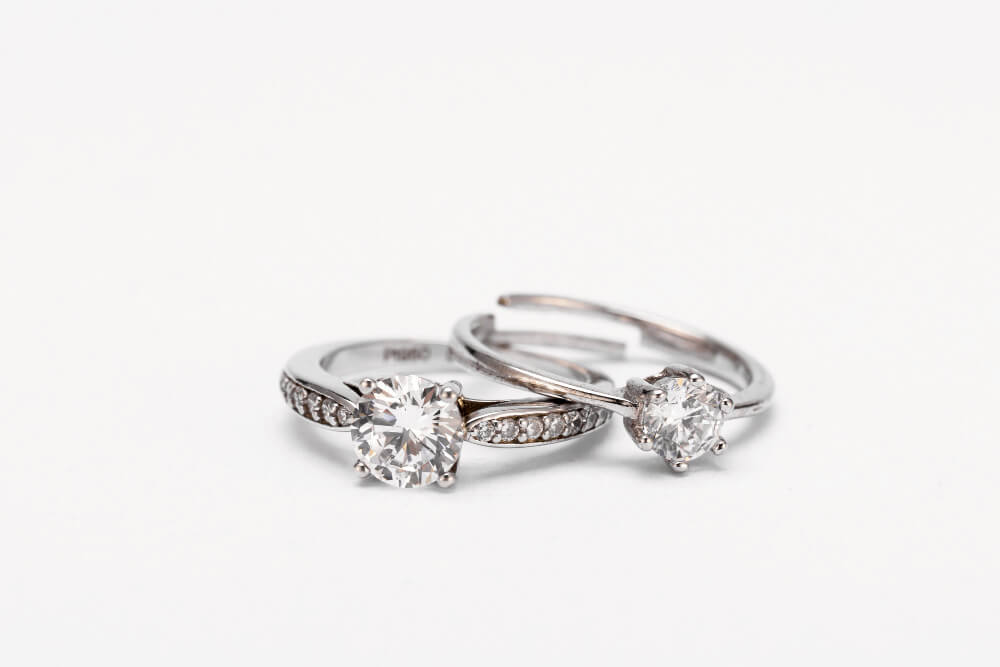1. Chemical Composition:
- White Gold: White gold is typically a mixture of gold and other alloys such as nickel, platinum, or palladium. These alloys give white gold its white or gray color.
- Silver: Silver is a chemical element with the symbol Ag, and it is a naturally occurring white, lustrous metal.
2. Color:
- White Gold: The color of white gold is usually white or gray, which is due to the alloys used in its manufacturing.
- Silver: Silver has a naturally bright white color.
3. Luster:
- White Gold: Despite its white or gray color, white gold can be polished well to achieve a beautiful shine.
- Silver: Silver has a natural, bright luster.
4. Strength and Durability:
- White Gold: White gold is usually harder and more durable than silver due to the added alloys.
- Silver: Silver is softer and more susceptible to scratches and tarnish compared to white gold.
5. Value:
- White Gold: White gold is often more expensive than silver due to its gold content and the use of precious alloys.
- Silver: Silver is typically much cheaper than white gold.
6. Uses:
- White Gold: White gold is commonly used in jewelry making and fine watches.
- Silver: Silver is also used in jewelry production as well as in various other applications such as utensils, tools, and ornaments.
If you prefer the white color and are looking for a stronger and more durable metal, white gold may be the right choice. However, if you want white, shiny jewelry at a lower cost, you can consider silver."




